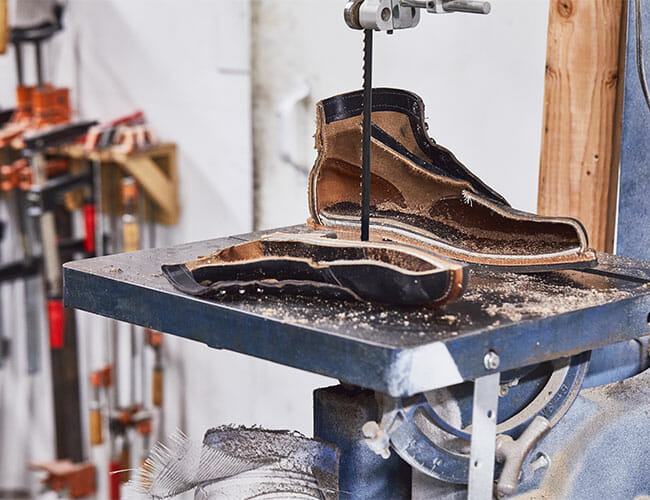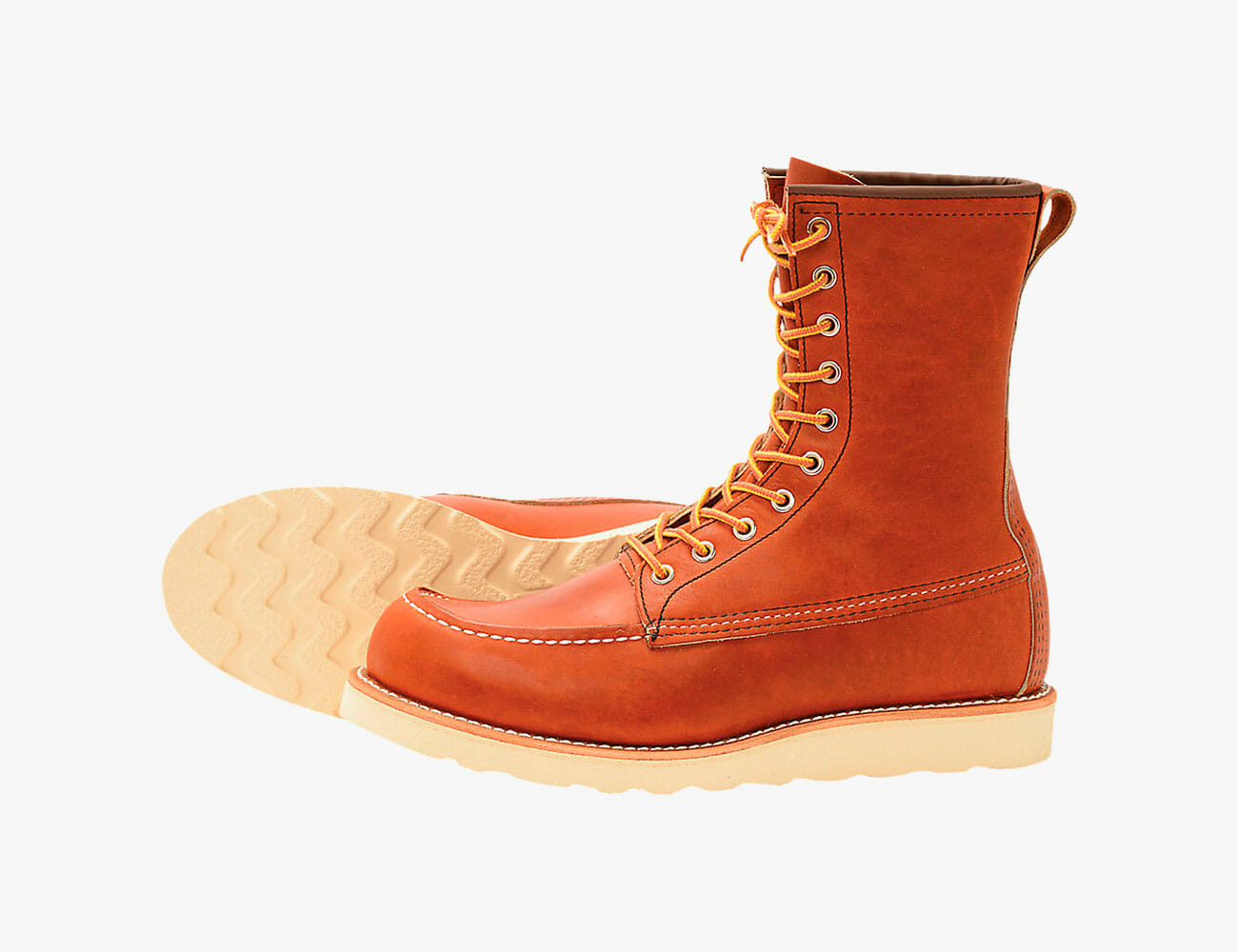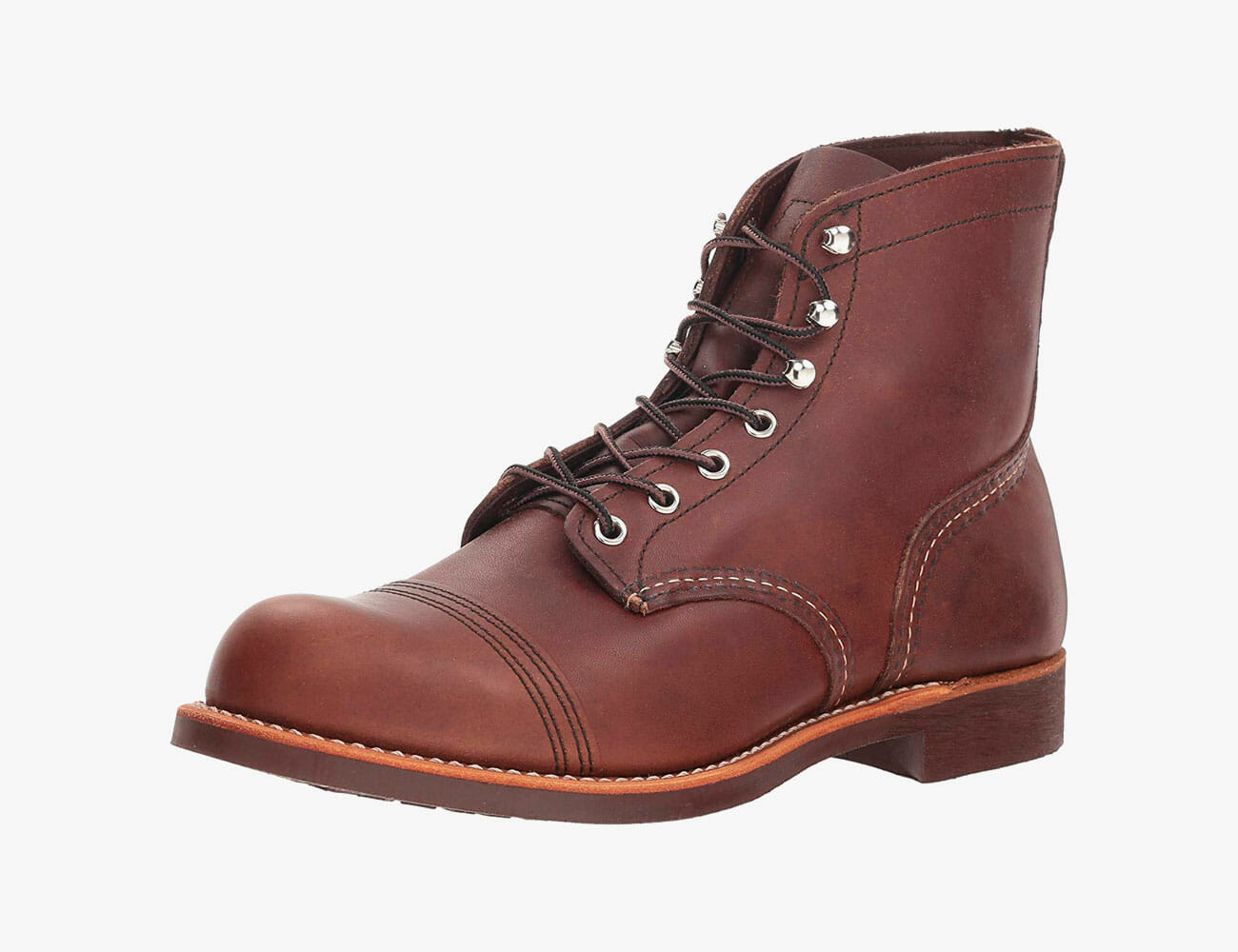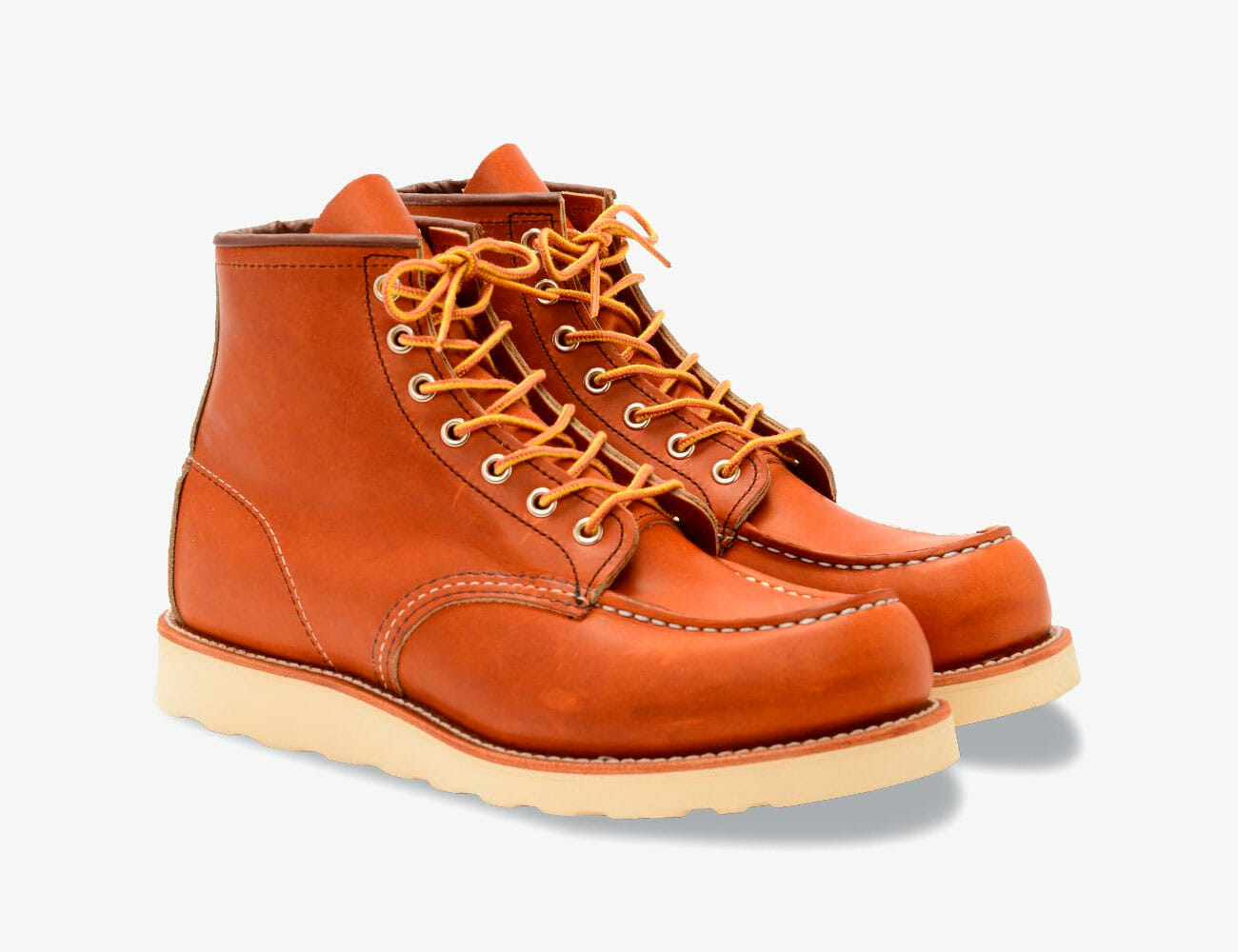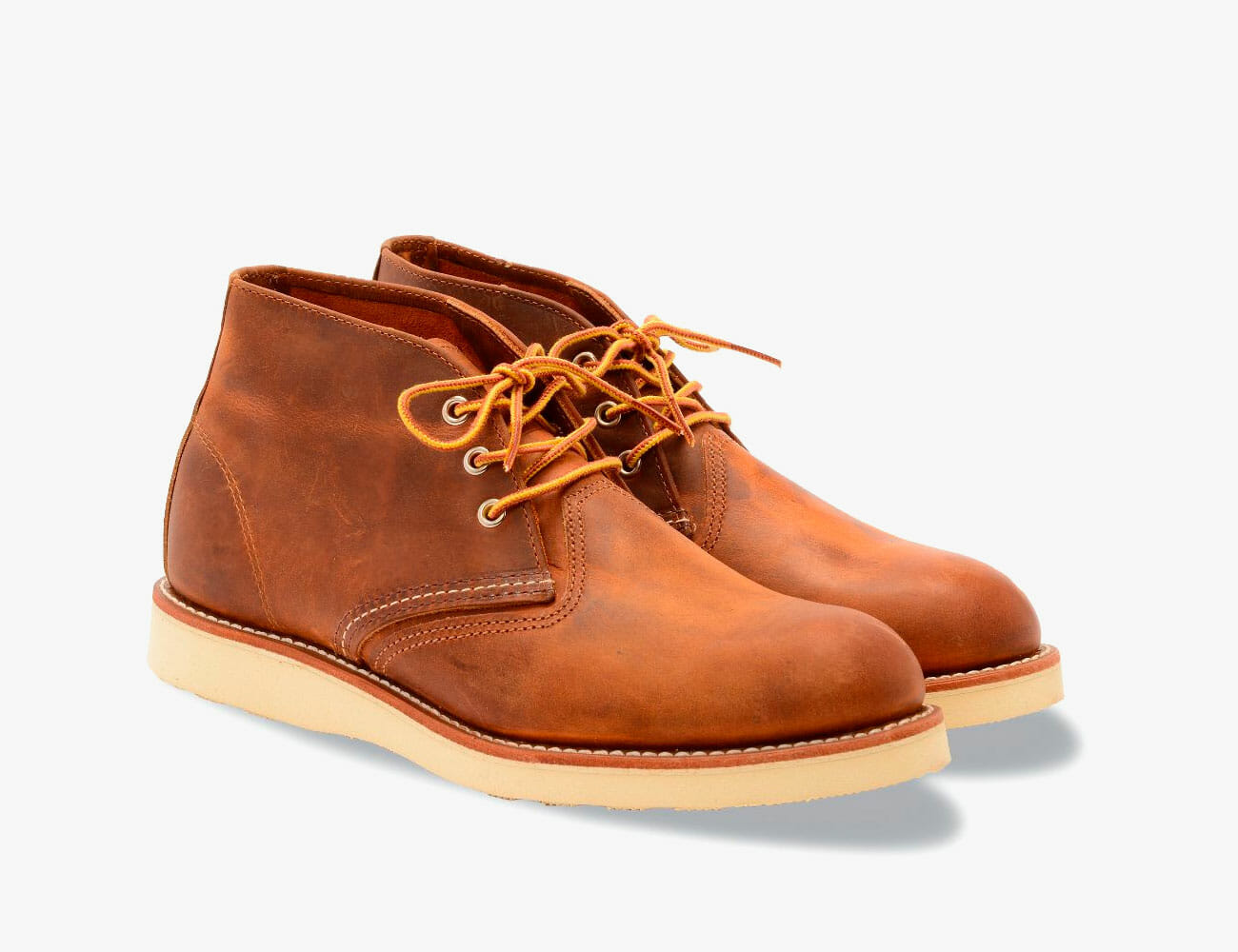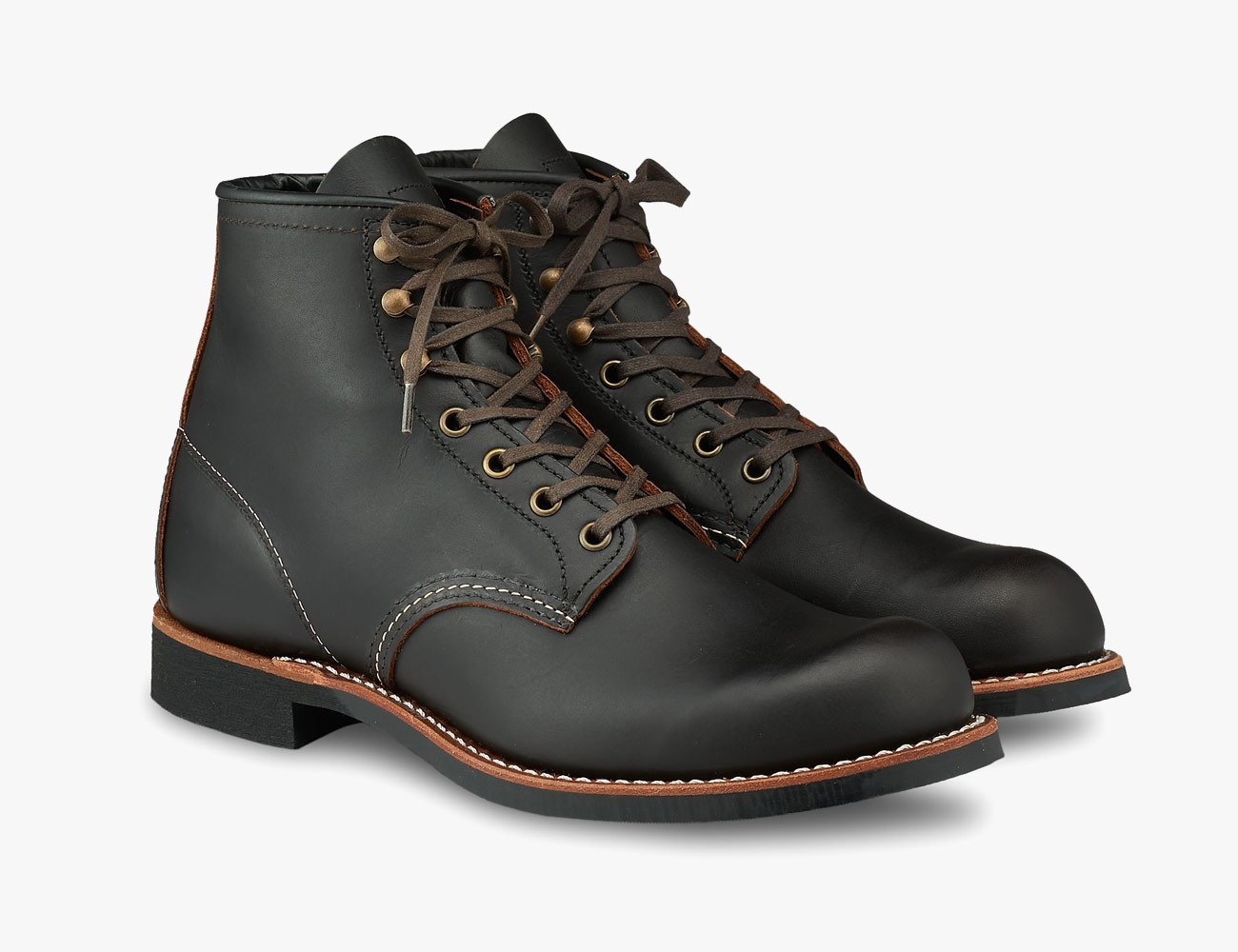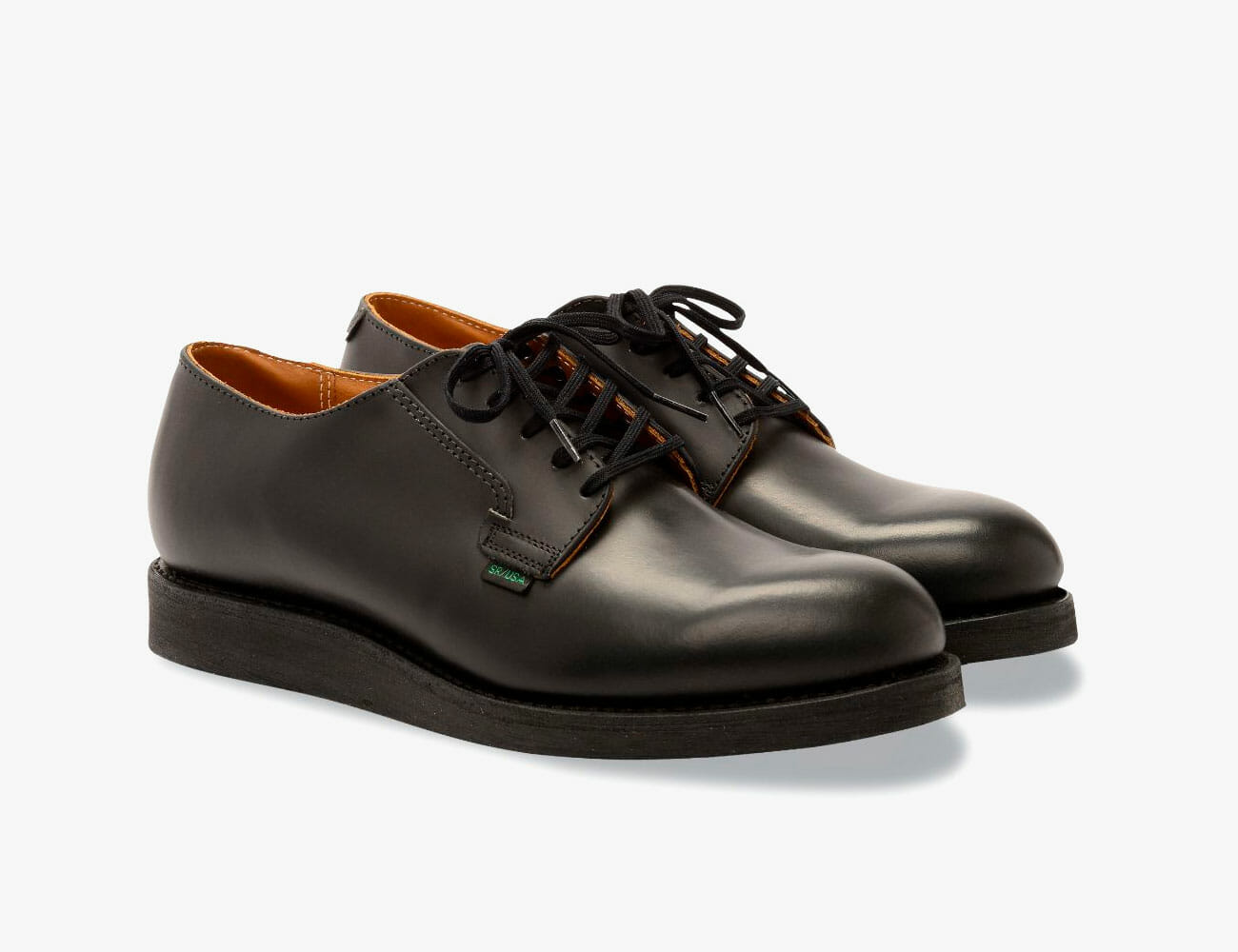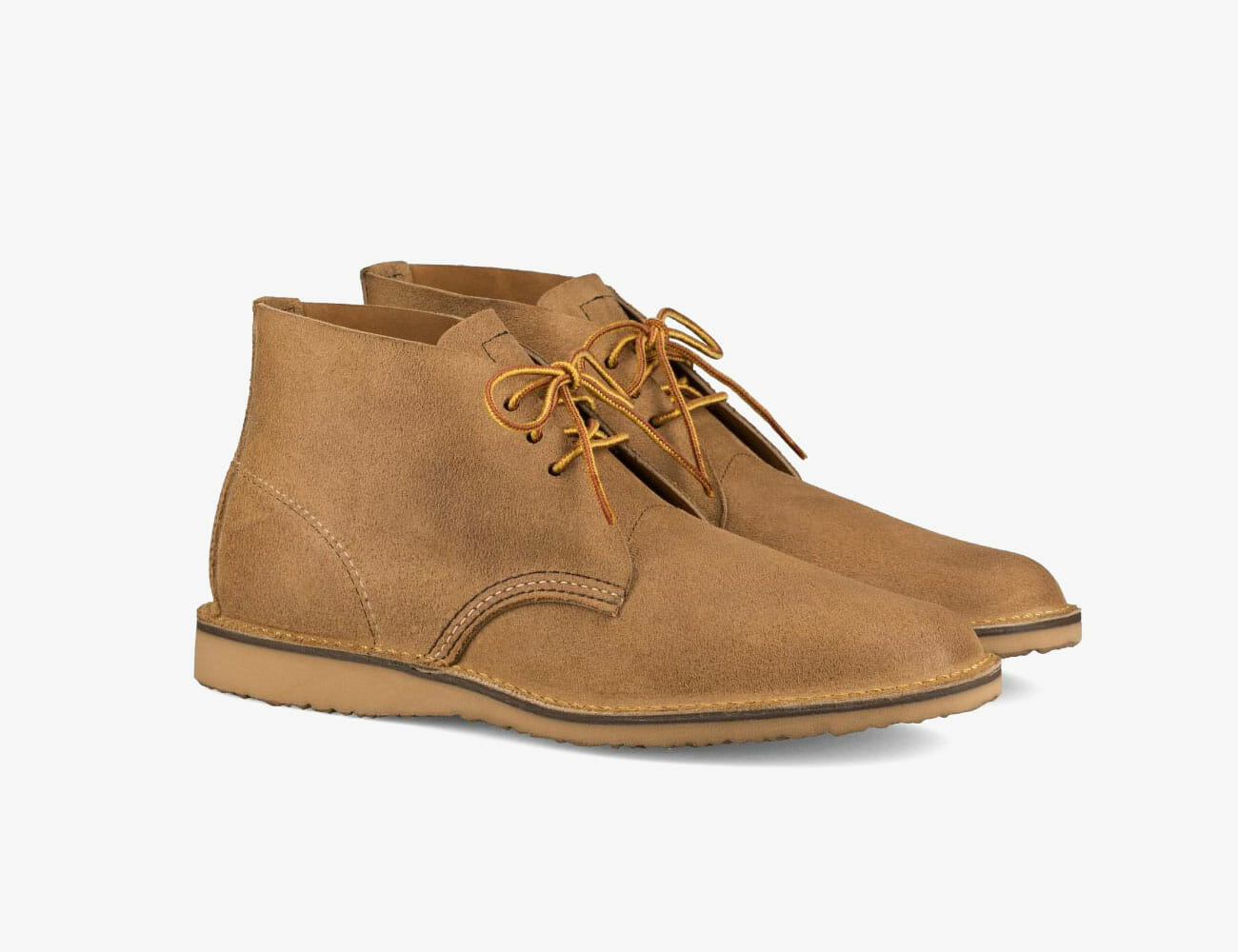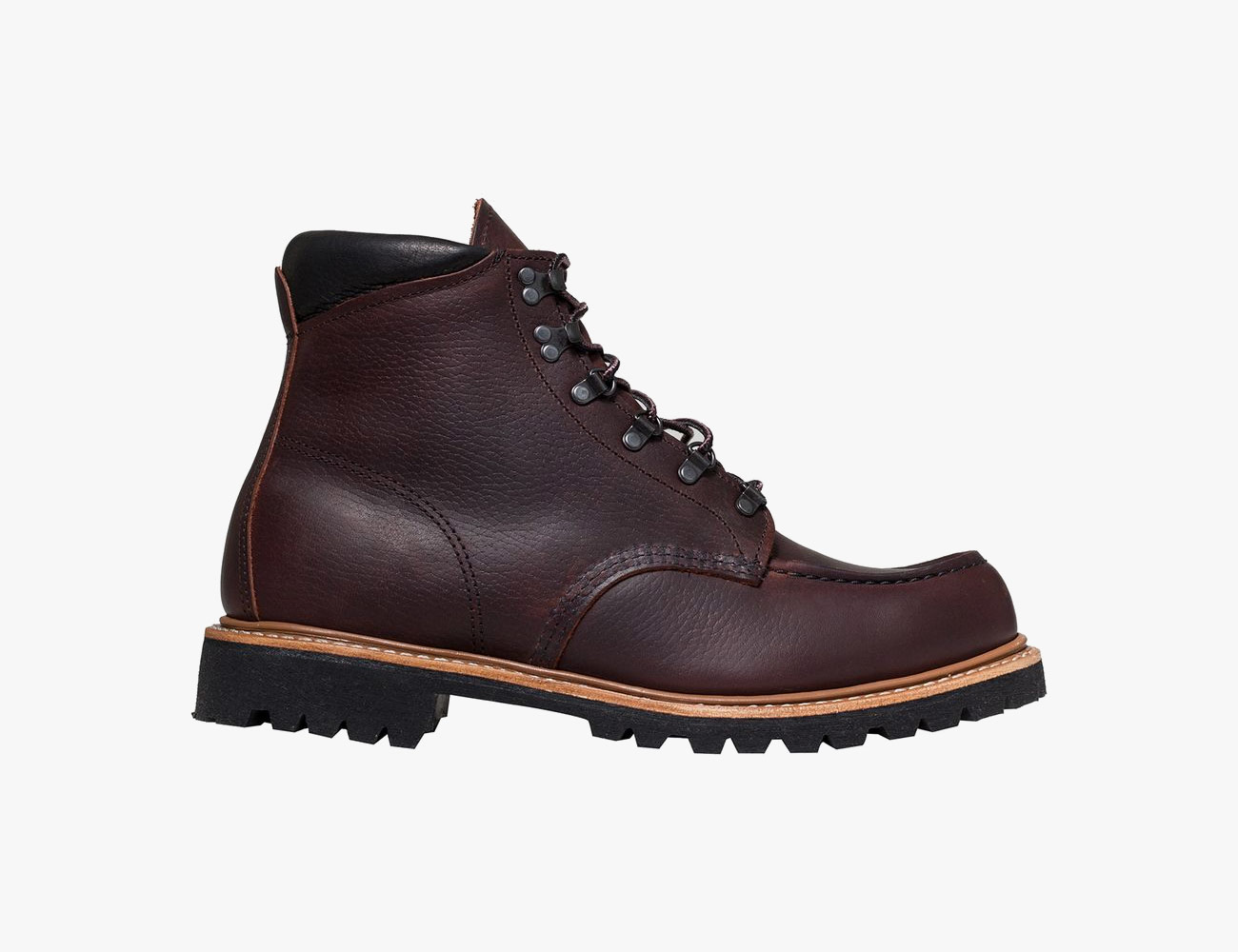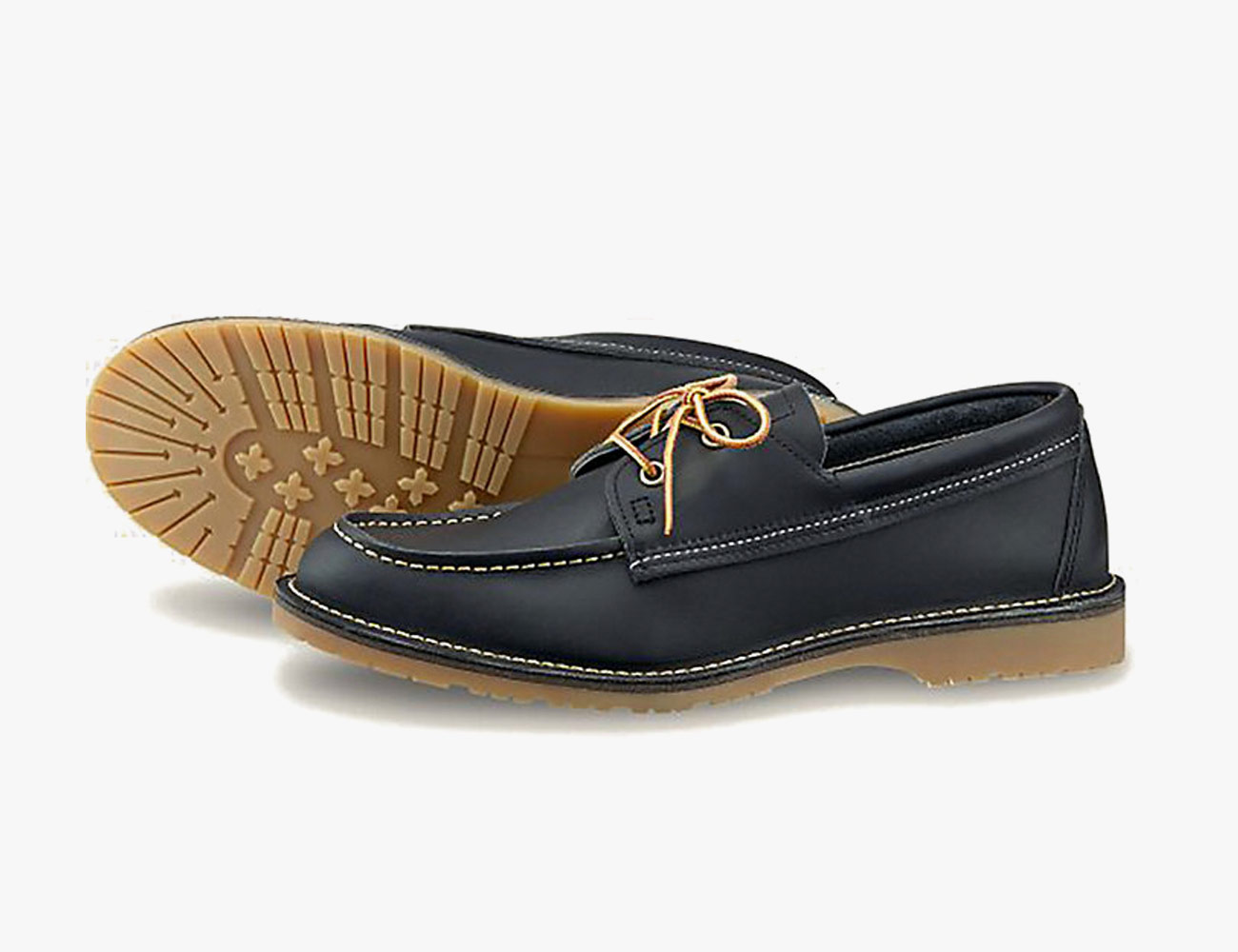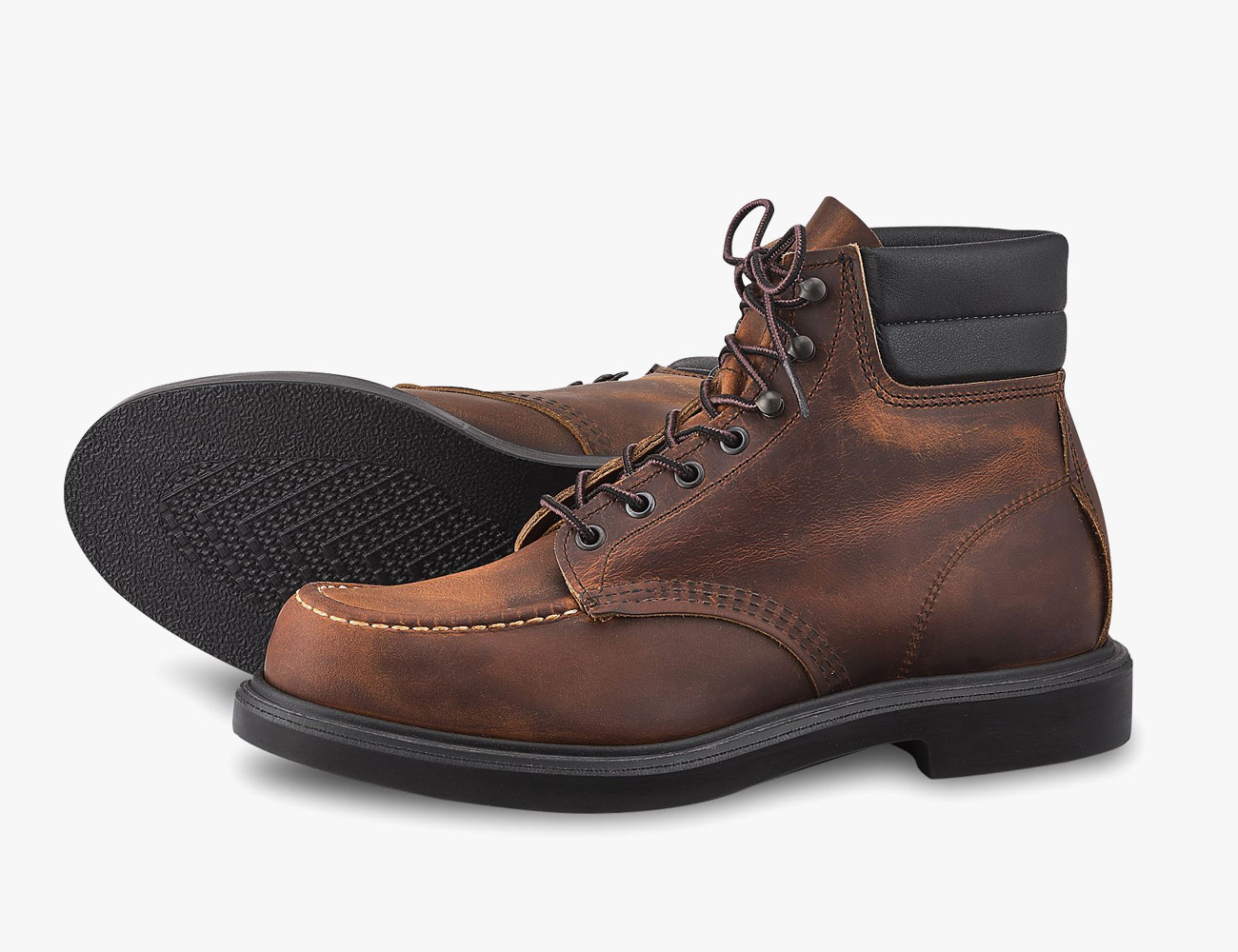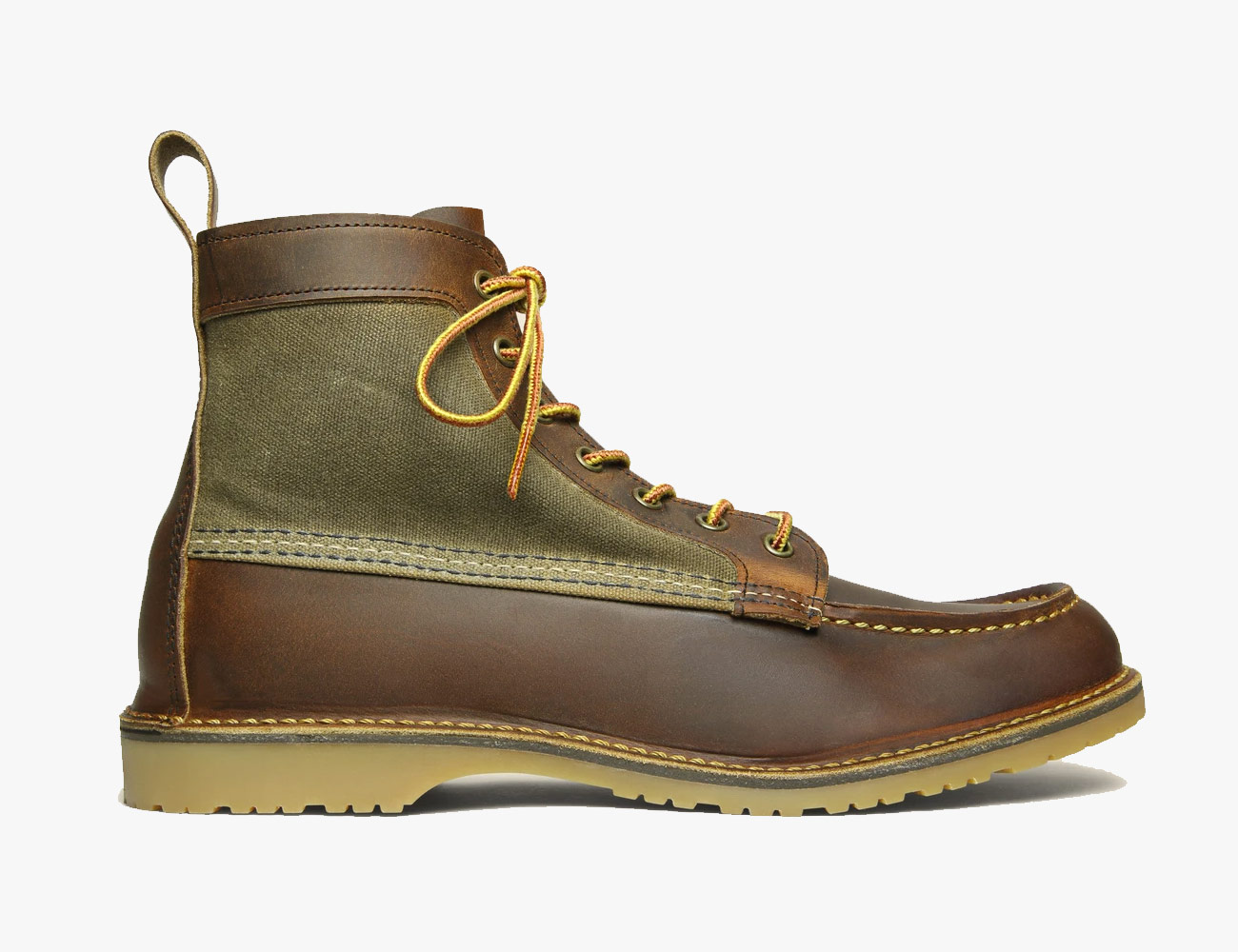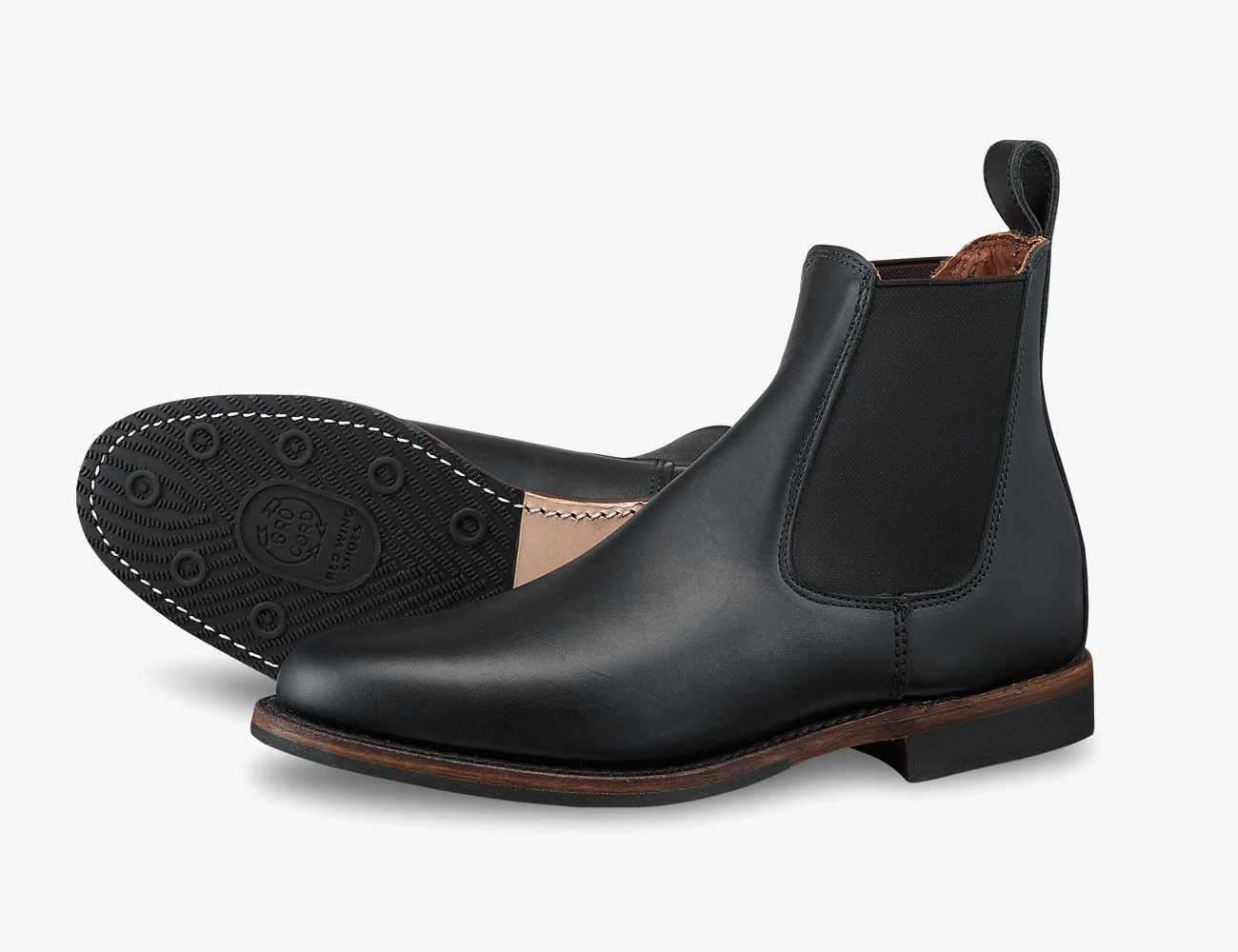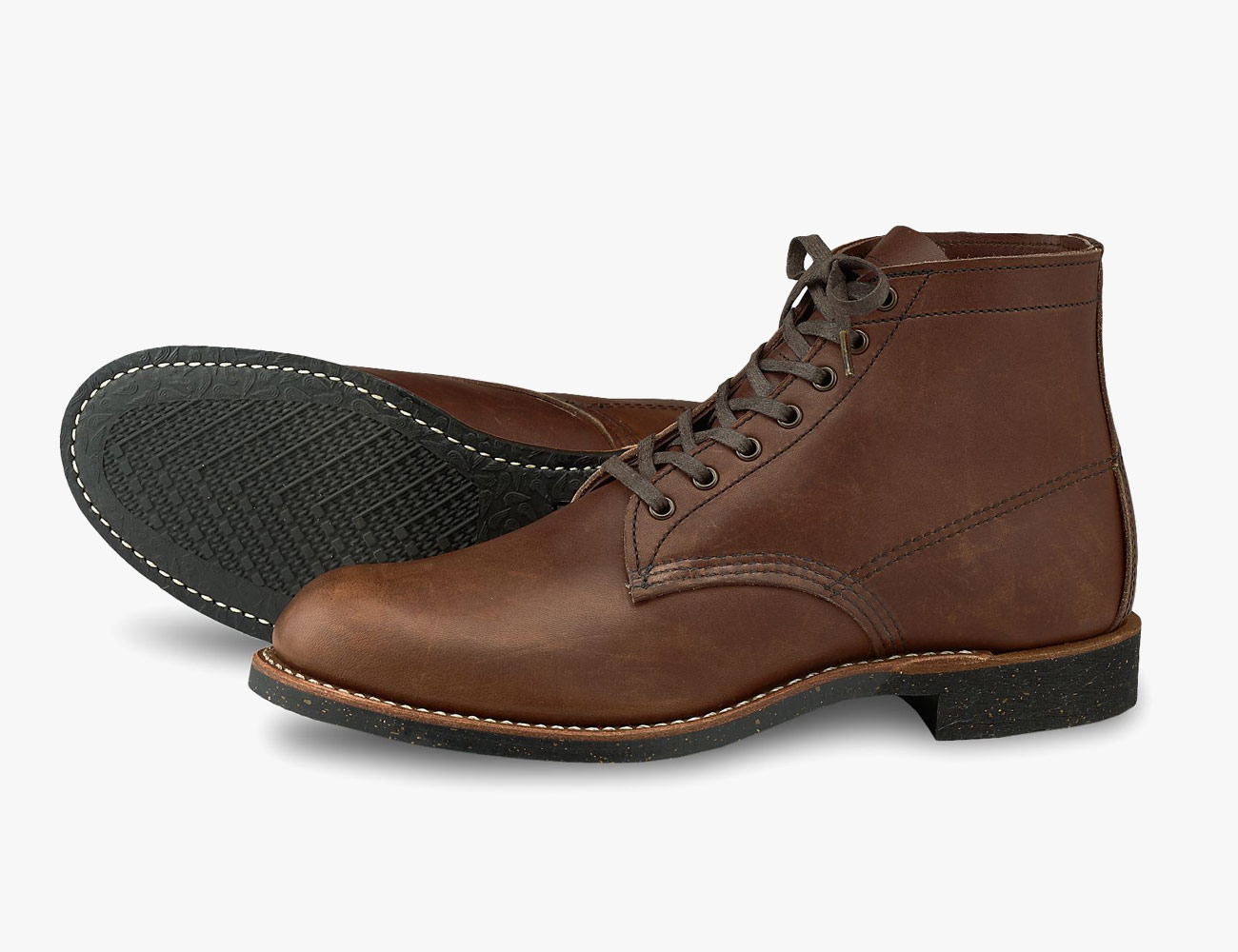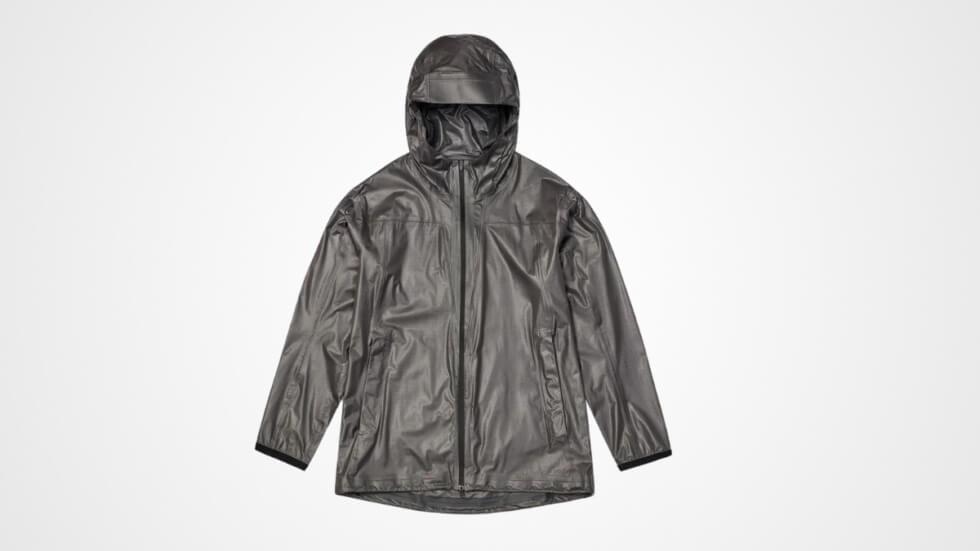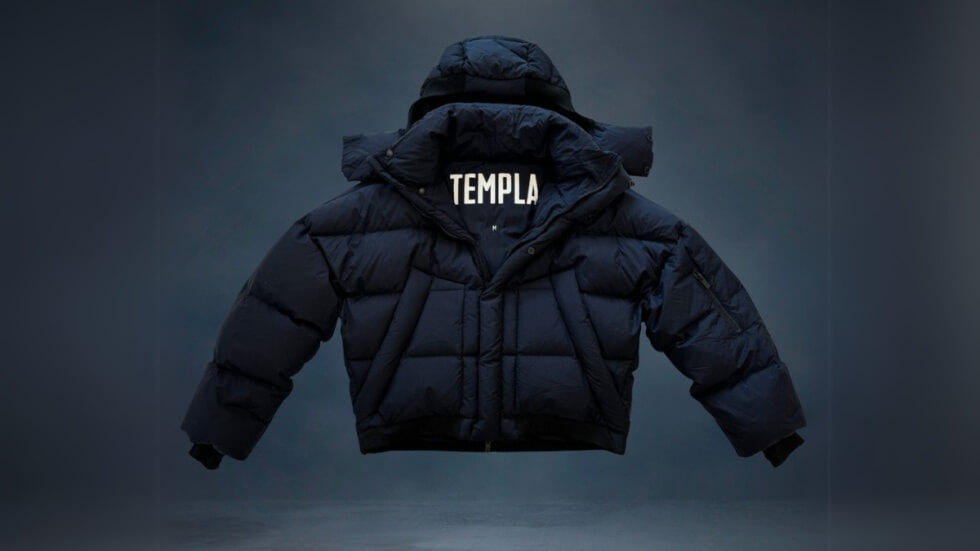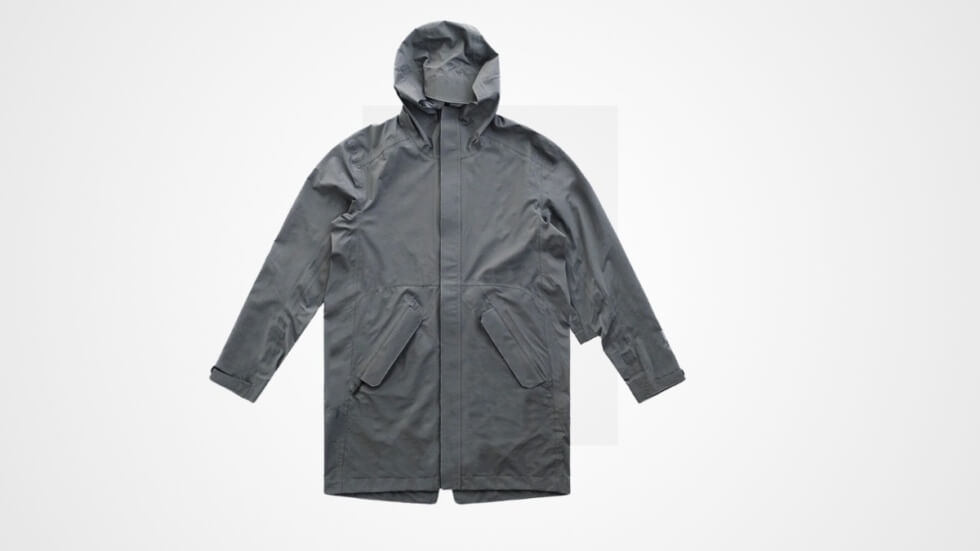Welcome to Brand Breakdown, a series of comprehensive yet easy-to-digest guides to your favorite companies, with insights and information you won’t find on the average About page.
Red Wing Shoe Company is named after the small Minnesota town where it manufactures a range of rugged boots and shoes. Founded in 1905 by Charles Beckman — and still privately held and family-operated today — the brand grew quickly, supplying doughboys with boots designed for the muddy trenches of WWI. After the war, Red Wing became a household name across the country thanks to its safe and hearty boots made for factory workers, farmers and outdoorsmen.
Sturdy, classic and well-loved by generations, the boots and shoes are still handmade in Red Wing’s Minnesota plant. While mainline Red Wing continues to supply construction workers and outdoorsmen, Red Wing Heritage, introduced in 2008, revives styles from the brand’s archive. Based on classic models, the styles prioritize work-ready function. “The foundation is built upon making quality footwear for people to wear on the job,” says Steve Spencer, Managing Director of Red Wing Heritage.
The brand’s boots are the gold standard for men’s footwear and are stocked at men’s clothing shops the world over. Made to the same exacting standards as their work boots, Red Wing Heritage styles have a wide appeal and are just as appropriate on the ranch or factory floor as they are in the office or at home. This guide will help you navigate classic styles from the Red Wing Heritage catalog, but before you dive in, take a minute to familiarize yourself with important boot terminology.
Terms to Know
Every shoe is made up of a variety of parts that all affect the comfort, style and durability. These terms aren’t specific to Red Wing Heritage but are important to understand before exploring specific boots.
Outsole: This is the part of the boot that touches the ground. The outsole can be made from all matter of materials. Your dress shoes probably have leather outsoles while most Red Wings will have a rubber outsole or a combination of rubber and leather.
Midsole: This section of the boot separates your feet from the outsole. The harder the midsole, the longer the break-in time, but the longer the lifespan.
Welt: The welt is one of the keys to a long shoe life. This is the piece of leather around the edge of the sole which the rest of the boot is attached to. Most Red Wings are made with Goodyear-welt construction. This patented process makes the boots weather resistant and allows them to be resoled again and again.
Last: This is the silhouette of a shoe or boot. In the manufacturing process, the shoe upper is pulled over the last to give it its shape. Red Wing uses at least eight different lasts dating back to the 1930s.
Cap Toe: A self-explanatory style in which an additional layer of leather forms a reinforcement “cap” over the toe (read: added durability).
Moc Toe: One of Red Wing’s most recognizable toe shapes. Named for the moccasin style and shape, this style is created when the leather seams meet on the top of the toe.
Vibram: One of the oldest and most storied rubber outsole brands, Vibram is renowned for its quality.
Lug Sole: A classic rubber sole construction common in Red Wings and most other heavy-duty work boots featuring thick rubber treads. Invented by Vibram, the lug sole provides great traction and weather protection.
Traction Tred: This non-marking outsole is most closely associated with Red Wing boots. The large white rubber wedge won’t mark factory floors and provides generous cushioning.
Irish Setter: Irish Setter is a traditional Red Wing brand geared towards hunters. While the modern styles feature insulation and cushioning, the vintage Irish Setter line is more akin to Red Wing Heritage styles. You can find many older pairs on eBay and Etsy — they’re easily identified by the Irish Setter logo on the inside of the tongue. Red Wing Heritage also reproduces a few of the best vintage styles, but to get your hands on those you will have to look in Japan.
Often, it’s difficult to picture how a boot is actually put together, where the stitches go and what you’re actually standing on. So we sourced prime examples of each type of boot construction — Cemented, Blake/McKay, True Moccasin, Goodyear Welt and Stitchdown — from some of the top brands in the industry and cut them in half. Read the Story
Construction
Making one pair of Red Wings takes about 250 steps from start to finish. While we are not going to list them in detail, here is a short breakdown of how these legendary boots are made.
It all starts with the leather. All Red Wing Heritage boots are made from leather tanned at S.B. Foot Tanning Company. Owned by Red Wing since the 1980s, the tannery has been providing leather for Red Wing since they opened their doors in 1905. All the hides are tanned by hand with the company’s wooden tanning casks in a factory just down the road from Red Wing’s facilities.
Once tanned, stretched, rolled and finished the leather is cut into patterns. Because no two pieces of leather are the same, it takes a well-trained craftsman to best utilize an entire hide. Once the leather has been cut, the shoes and boots are sewn together using Puritan stitch machines which provide unique triple-stitch lines. No longer made, these vintage machines are maintained by a cadre of in-house repairmen to keep them humming (some of them have been in use in the Red Wing factory for over 50 years).
After being sewn, the shoe is lasted and the upper is attached to the midsole and outsole with the Goodyear welting process. “The Red Wing brand is built on quality, craftsmanship and premium materials,” explains Spencer. “There is no marketing story that can create that.”
Styles
Red Wing Heritage is constantly expanding, pulling from its archives as well as designing new styles that fit the brand’s mission. “We always reach back into our archives, whether is it something directly we would pull and bring forward to today or simply inspiration,” says Spencer. Here is a breakdown of designs that everyone should know.
Style Number 877: 8-Inch Classic Moc
Introduced in 1953, this is the iconic Red Wing style. Designed with a white wedge sole and moc toe, the tall eight-inch boot was designed for hunters and sportsmen, but also found a devoted following on the work site.
Style Number 8085: Iron Ranger
Hardwearing and reinforced with a cap-toe, the Iron Ranger can be dressed up or worn as a work boot. Designed for iron miners, it is made from oil resistant leather and features speed hooks for ease of lacing.
Style Number 875: Classic Moc
The Classic Moc is virtually identical to the 8-Inch Moc, but is two inches shorter. As such, it is a bit more practical for the city dweller. The style comes in eight different types of leathers.
Style Number 3137: Work Chukka
Designed as an indoor workboot, the Work Chukka features a white rubber wedge sole and rugged leather upper. It is an ideal option for an office workers or factory workers.
Style Number 9011: Blacksmith
The Blacksmith takes after boots that were worn by the metal-working tradespeople to protect their feet from scalding sparks and molten iron. It stands six inches tall with a mini-lug sole, cork filling and three-quarter Goodyear Welt.
Style Number 101: Postman Oxford
Designed for use by policemen and mail carriers, the Postman Oxford was introduced in 1954. A uniform shoe only available in Black Chaparral leather with a cushioned wedge crepe sole, these are incredibly sturdy and comfortable.
Style Number 3321: Weekender Chukka
Red Wing spends a lot of time outfitting feet for work, but it also designs styles for off-the-clock wear. The Weekender collection is lightweight, featuring stitchdown construcion and rubber wedge soles.
Style Number 2927: Sawmill
Drawing upon boots from the 1970s, the Sawmill is made with winter climes in mind with a water-resistant storm welt, a felt wool insole and slosh-ready Vibram lug soles.
Style Number 3330: Wacouta Camp Moc
The Wacouta Camp Moc resembles summer footwear staples like the preppy boat shoe, with a low profile and moccasin-style toe.
Style Number 8801: Classic Supersole
The Classic Supersole looks very much like Red Wing’s iconic 875 Moc Toe Boot, with a few key differences. The padded leather collar provides comfort at the ankle and the cement construction makes the boot watertight.
Style Number 3335: Wacouta 6″ Moc Toe Boot
The Wacouta 6″ combines Red Wing’s tough SB Foot Tannery leather with water-resistant waxed canvas and stitchdown construction for a hunting-inspired boot that’s lighter and more flexible than most.
Style Number 9438: Williston Chelsea
As part of Red Wing’s Williston line of shoes, the 9438 is one of the dressier and sleeker offerings in the line.
Style Number 8064: Merchant
The Merchant shares similarities with the Blacksmith, but takes a more formal approach by forgoing the speedhooks and French binding and opting for a sleeker toe and a more subtle rubber sole.
Style Number 2942: Roughneck
You can think of the Roughneck as a more aggressive Classic Moc with its substantial heavy lug sole. But, it’s also a bit easier to don and doff thanks to its handy speedhooks.
Style Number 3312: Weekender Chelsea
The Weekender Chelsea, as the name would suggest, is a casual shoe that’s not meant to straddle the line between dress and work like the Williston Chelsea.
Style Number 9435: Williston Six-Inch
This is the most premium (and dressiest) boot that Red Wing offers. It can take a beating like the rest of them, but is decidedly the most formal of the lot.
Style Number 9431: Williston Oxford
Where you would take the Postman shoe out on the mail route, you’d take the Williston Oxford out to a nice dinner. The sleek toe box and the blind eyelets make it a shoe you’ll want to keep polished.
Style Number 8188: Pecos Boot
Originally built as Red Wing’s response to the cowboy boot, the lauded Pecos boot features a roughout leather upper and a shorter block heel to separate itself a bit from the western competition.
Style Number 877: Todd Snyder x Red Wing Heritage Moc Toe Boot
In cahoots with venerated American designer Todd Snyder, the classic 8-inch Moc Toe Boot is trimmed down a couple inches while mixing smooth leather and suede.
Style Number 8884: Mossy Oak Camouflage
There’s hardly a more American boot than this camo rendition. It’s part of Red Wing Heritage’s limited edition range of boots and it’s as hard to find as it is difficult to see.
Style Number 8829: Billy Boot
The Billy Boot was first introduced in the 1930s as a children’s boot and originally came with a pocket knife to accompany its nifty knife sheath. Red Wing brought the EDC-friendly boot back for adults in 2019 and it’s all nearly sold out.
Style Number 5679: Fragment x Red Wing
Japan has been among the most fervent when it comes to Americana. So, it makes sense that lauded Japanese designer Hiroshi Fujiwara would take a crack at a Red Wing collaboration of his own. Using a Chromexcel leather for its sheen and pliability, as well as black tonal stitching, the streetwear take on the workwear classic is both brooding and burly.
Style Number 997: Red Wing x New Balance Sneakers
When two iconic American shoe manufacturers come together, it’s this. Equal parts Red Wing and New Balance, the collaborative sneaker features Red Wing’s iconic Hawthorne muleskinner leather and brick-red motif rendered in New Balance’s popular 997 silhouette.
Style Number 4327: Eat Dust x Red Wing Heritage
The fiery-red take on Red Wing’s pull-on boot is the hot idea from Belgian brand Eat Dust. It features a mashup of smooth leather with nappy rough-out leather worthy for motorcycle rides.
Vintage: Irish Setter
Though not part of the Red Wing Heritage label, the Irish Setter boot has a dedicated following of its own for its durability and the beautiful color of its leather, named after the rich coats of the Irish Setter dog. Red Wing Heritage did bring it back for a brief period in 2018, but only to limited quantities. The Irish Setter label today is still focused on boots for working and hunting, but at a slightly lower price point than its Red Wing Heritage label.



